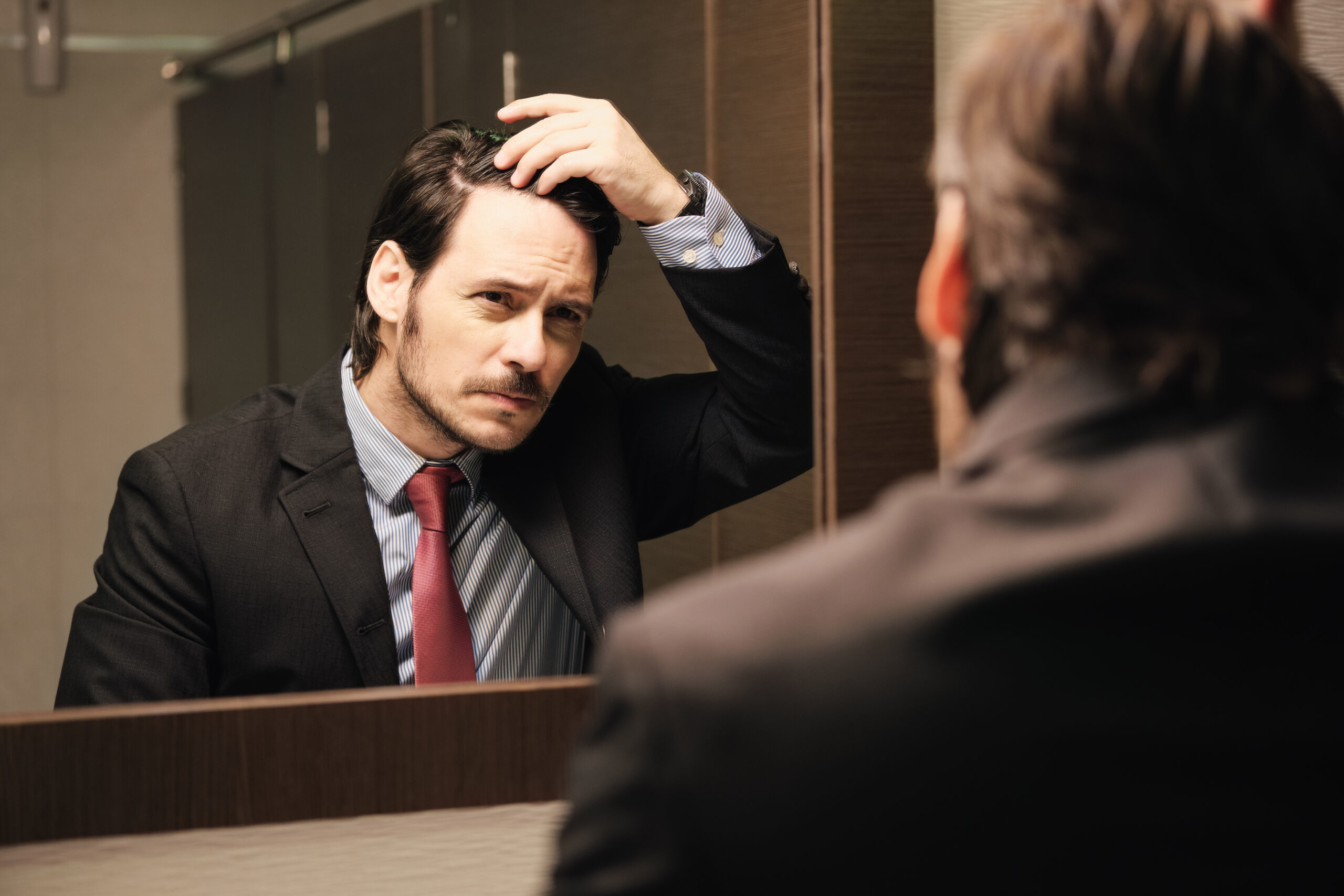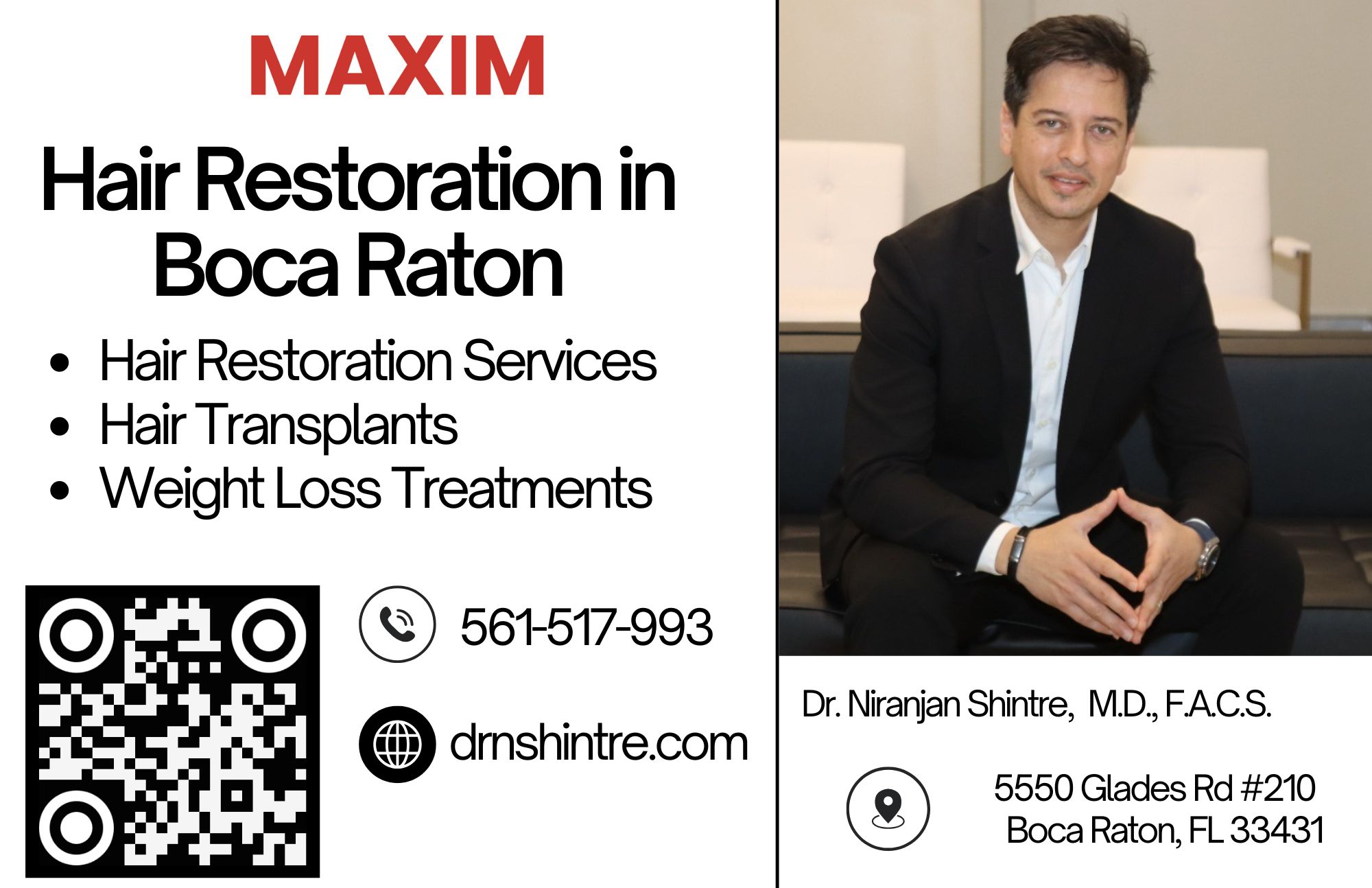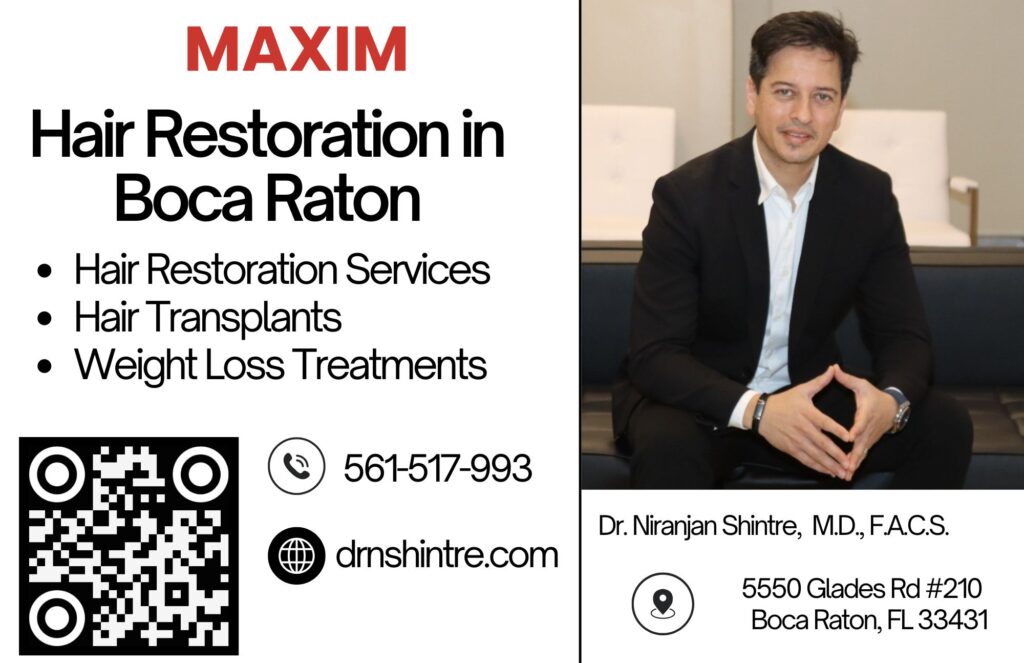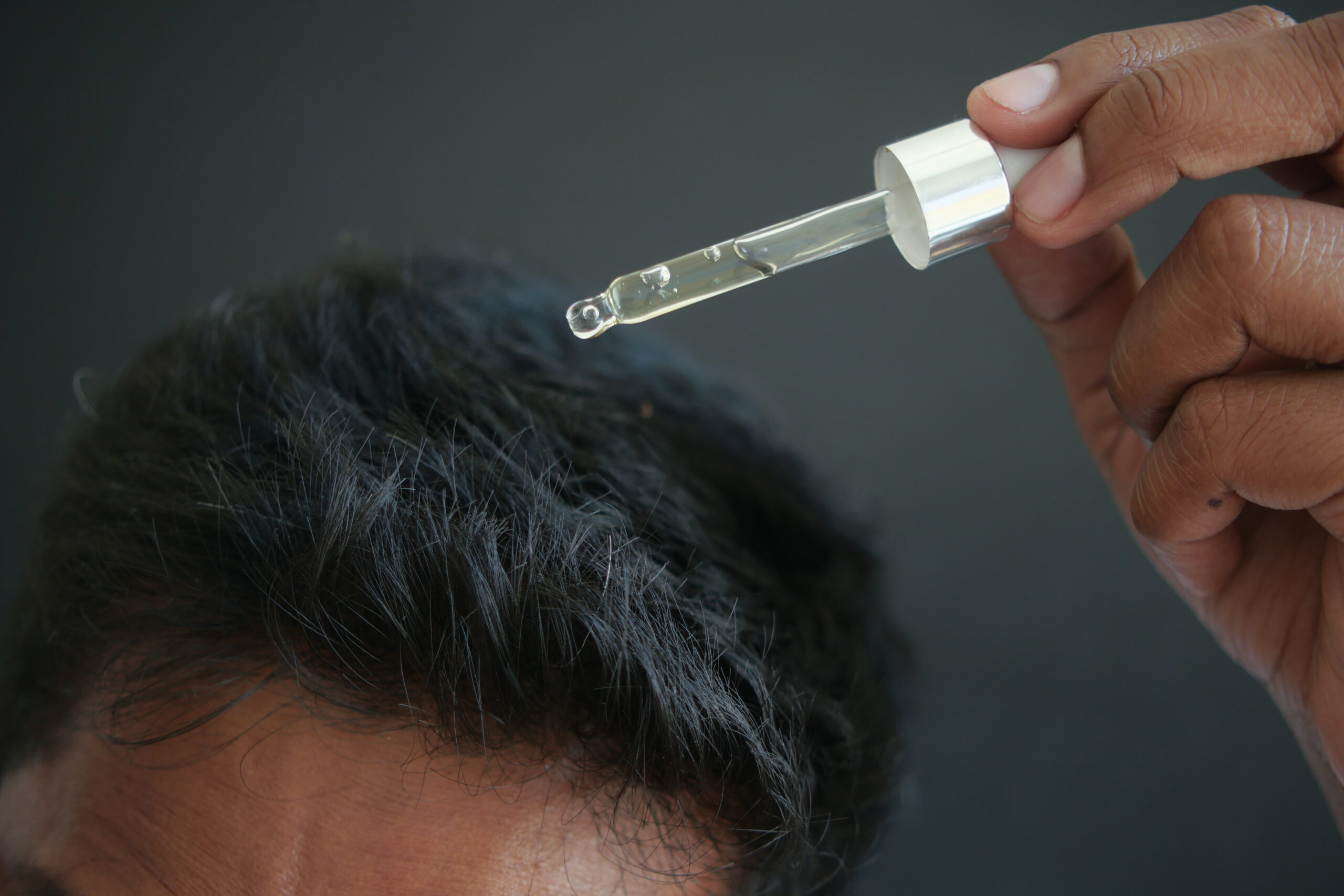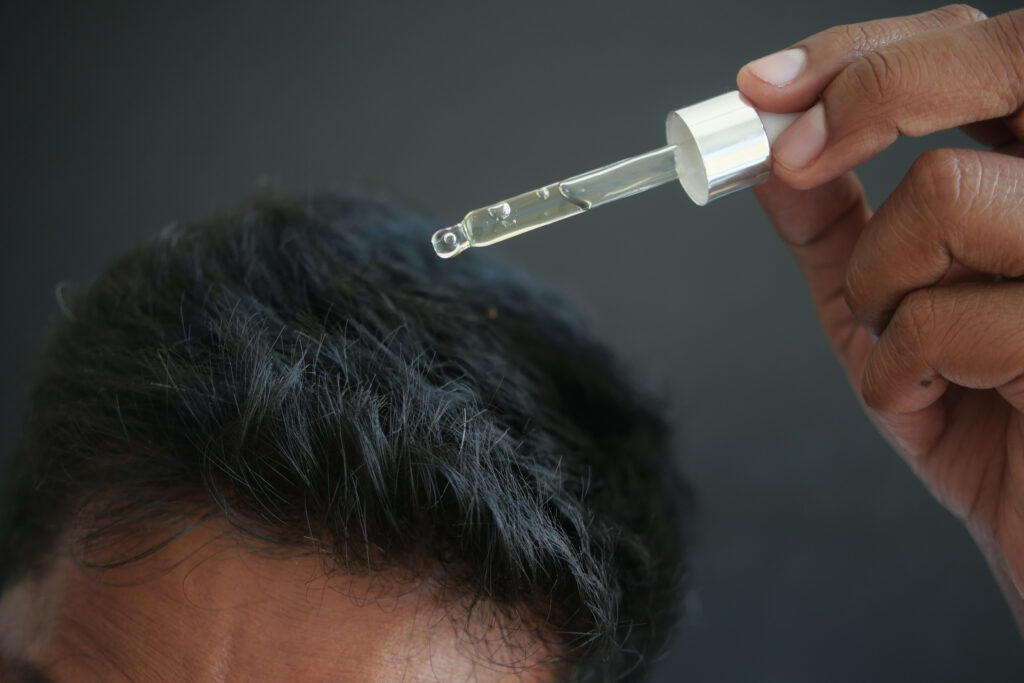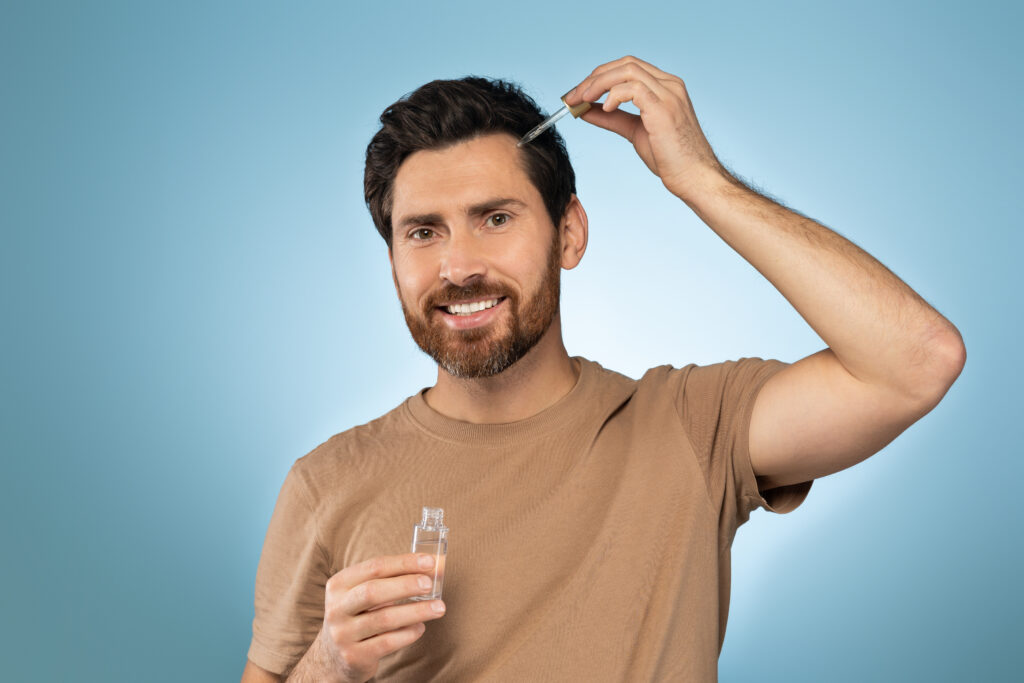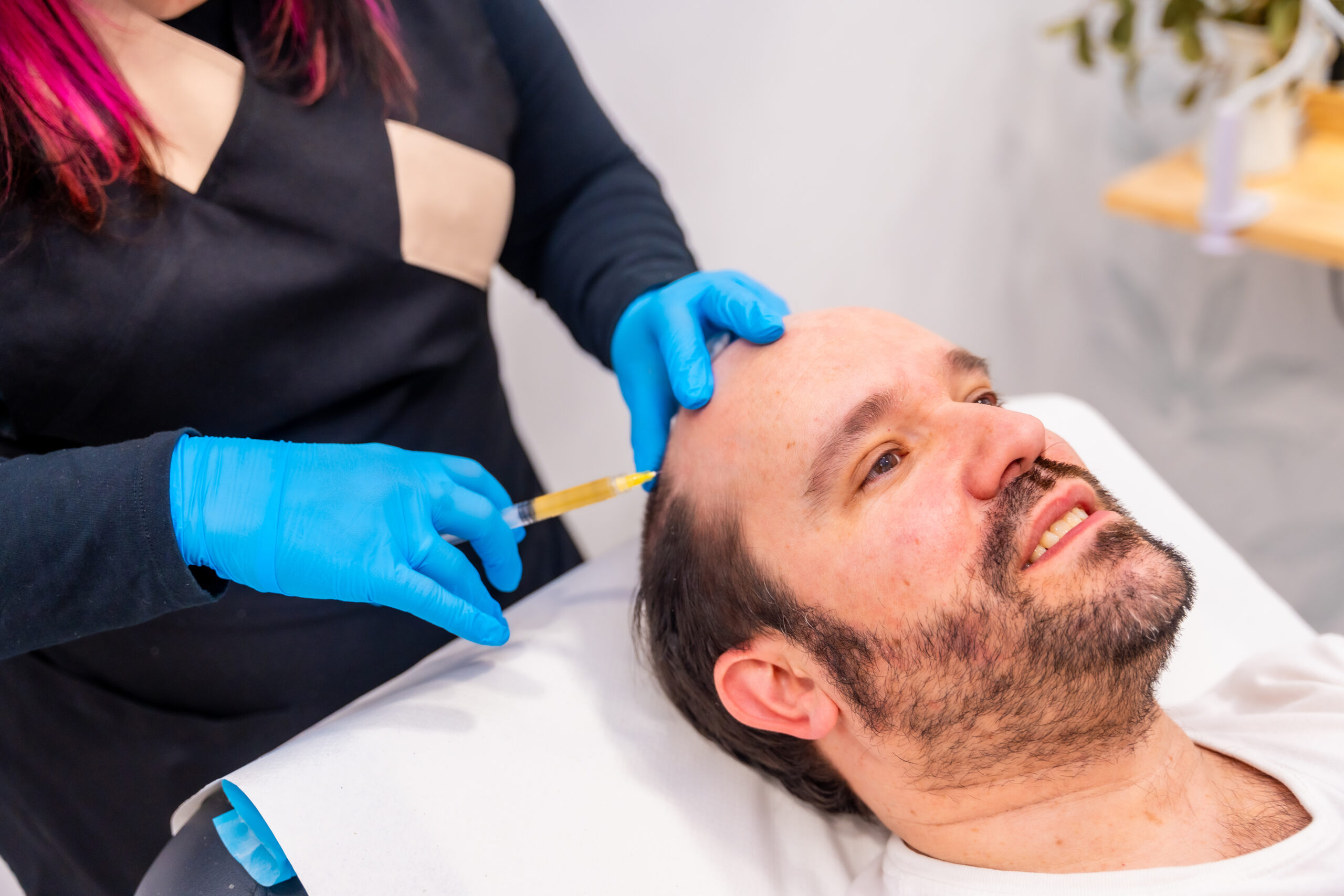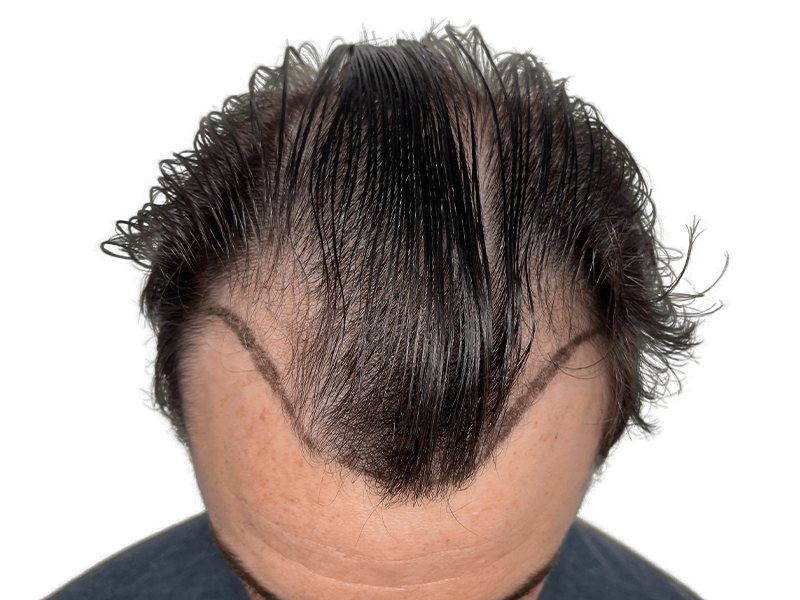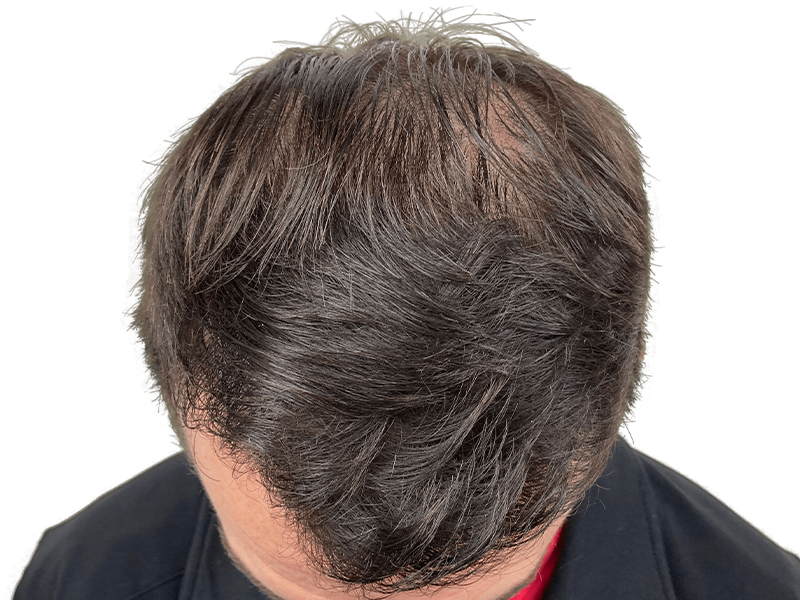Hair loss is a common concern for both men and women, and many are turning to surgical hair restoration to reclaim a full head of hair. In fact, about 85% of men and 33% of women experience hair thinning or baldness at some point in their lives. If you’re considering a Boca Raton hair transplant, you’ve likely heard of the two leading techniques: Follicular Unit Extraction (FUE) and Follicular Unit Transplantation (FUT). These methods are highly popular in Palm Beach County hair restoration clinics, and each has its own advantages. In this comprehensive guide, we’ll break down FUE vs FUT, compare their benefits and differences, and help you determine which approach might be best for your needs.
Understanding Hair Restoration and Its Popularity
Hair restoration has come a long way, and modern techniques offer natural-looking results for patients with hair loss. Both FUE and FUT involve transplanting your own hair follicles from a donor area (typically the back or sides of the scalp) to thinning or bald areas. The main difference lies in how the hair follicles are harvested from the donor site. Thanks to advancements in technology, FUE has become the most widely performed hair transplant method in recent years, but FUT (often called the “strip method”) remains a tried-and-true procedure with its own loyal proponents. Both techniques are offered by the top hair transplant doctors in Boca Raton, FL, who have the expertise to recommend the right method based on each patient’s goals.
Why are FUE and FUT so popular? For one, they are proven solutions for androgenetic alopecia (pattern baldness) and other forms of hair loss. Men and women from their 20s through 60s in Boca Raton and surrounding areas seek these procedures to restore confidence in their appearance. FUE and FUT can produce permanent, natural hair growth in the transplanted areas, making them more effective long-term than topical treatments or medications alone. Additionally, the minimally invasive nature of modern hair transplant techniques and the refined results (no “pluggy” doll-like hair of the past) have boosted their popularity.
Local Insight: South Florida’s lifestyle and image-conscious culture mean that procedures like hair transplants are in high demand. Many patients in Boca Raton, Delray Beach, and throughout Palm Beach County are embracing FUE and FUT to look and feel their best. Below, we’ll explore each method in detail before comparing them head-to-head.
What is FUT (Follicular Unit Transplantation)? – The “Strip” Method
Follicular Unit Transplantation (FUT), or the “strip” method, is a traditional hair transplant technique that has been used for decades with excellent results. In a FUT procedure, a surgeon removes a strip of scalp from the donor area (usually the back of the head) where hair is dense and resistant to balding. This strip is typically about 1–1.5 cm wide (the length depends on how many grafts are needed). The wound in the donor area is then carefully sutured or stapled closed.
Graft Preparation: The strip of scalp is dissected under high-powered microscopes into individual follicular units (tiny grafts of 1-4 hairs). Skilled technicians and the surgeon work to yield as many healthy grafts as possible from the strip. FUT is known for providing high-quality grafts because of the precise microscopic dissection, which can maximize the survival of transplanted follicles. Once prepared, these grafts are implanted into the bald or thinning areas of the scalp, placed in tiny incisions in the same way as in FUE (the implantation process is identical for FUE and FUT).
Procedure Details: FUT is usually done in a single session lasting several hours (often around 6–8 hours for a large session). Patients are typically given local anesthesia. Because a strip is removed, the initial healing in the donor area involves managing a linear wound. Stitches or staples are removed after about 10–14 days. Many patients report some tightness or mild pain in the donor area for a few days, which is managed with medication. The recovery for the transplanted area (recipient area) is similar to FUE – small scabs where grafts were placed, which heal in about a week.
Recovery Time: The overall recovery for FUT may be slightly longer than FUE when it comes to the donor area. You might need to avoid strenuous exercise or heavy lifting for a couple of weeks to prevent stretching the donor scar. Most people can return to desk work or normal daily activities in just a few days, but there can be more soreness in the first week compared to FUE. By 2-3 weeks, the donor area generally heals enough that you can resume full activity.
Scarring: FUT will always leave a linear scar at the donor site. This scar’s length corresponds to the width of the strip taken. In the hands of a skilled surgeon, the scar is usually a thin line a few millimeters wide, running horizontally across the back of the head. Over time, it typically fades to a thin white line. For patients who wear their hair a bit longer in the back, the scar is easily concealed once the hair grows out to about ½ inch or more. However, if the head is completely shaved, the FUT scar can be visible as a line across the scalp. The good news is that modern closure techniques (like the Trichophytic closure, where the surgeon overlaps the wound edges to encourage hair to grow through the scar) can make the scar very discreet. Still, anyone considering FUT should be aware of the scar, especially if they prefer ultra-short hairstyles.
FUT’s biggest appeal is that it often yields a large number of grafts in a single session, which can be advantageous for patients needing extensive coverage. Because the surgeon can harvest a sizeable strip, they can potentially get 2,000 – 3,500 grafts (or more) in one procedure, depending on scalp laxity and donor density. This means you might achieve your desired density with fewer surgeries. Additionally, FUT may be a better choice for patients who have very tight scalps (where extensive FUE harvesting would be difficult) or for those who cannot shave their head for social or professional reasons. Since only a narrow strip of hair is trimmed for the procedure, the rest of your hair can remain long to cover the sutures immediately post-op.
Summary of FUT: In summary, FUT is a high-yield hair transplant technique with a longer-established track record. It involves a larger initial incision but can be more efficient for covering big areas of hair loss. The trade-off is a linear scar and slightly longer donor recovery. FUT is often recommended for patients who need a lot of grafts, don’t mind a fine scar (which will be hidden under hair), and prefer to complete their transplant in one session if possible. It’s also often a good option for female hair transplant patients, since shaving the entire head is not required – a big plus for women who want to keep their existing hair length.
What is FUE (Follicular Unit Extraction)? – The Modern Approach
Follicular Unit Extraction (FUE) is a newer hair transplant method that has surged in popularity over the last 10-15 years. Instead of taking a strip of scalp, the surgeon harvests donor hairs one follicular unit at a time using tiny punches (typically 0.8 to 1 mm in size). Each punch makes a small circular incision around a hair follicle (or a group of 1-4 hairs), allowing the follicular unit to be extracted directly from the scalp. This approach eliminates the need for a large incision and stitches.
Procedure Details: In an FUE procedure, the donor area (usually the back and sides of the head) is shaved down to stubble length so the surgeon can see and harvest each graft. Using a specialized punching instrument (which can be manual, motorized, or even robotic), the surgeon carefully punches out individual hair grafts and plucks them from the scalp. These grafts are then sorted and implanted into the recipient area just like with FUT. Because follicles are taken one by one and scattered across the donor zone, FUE is more time-consuming than FUT. A large FUE session might last 8 hours or longer, and sometimes mega-sessions are split over two days. However, the procedure is still done under local anesthesia and is typically comfortable, with patients watching TV or listening to music during the surgery.
Recovery Time: FUE is considered less invasive than FUT because it doesn’t involve a large excision. The tiny holes left by the punch heal on their own within a few days. There are no stitches to remove, and post-op discomfort is usually minimal. Many patients report just mild soreness or a “sunburned” feeling in the donor area for a day or two. You can often return to non-strenuous work within a couple of days. The small scabs in the donor and recipient areas generally heal in 5-7 days. FUE patients also have fewer activity restrictions – you typically can resume exercise sooner (light activity in a few days, full workouts by a week or two) since there’s no risk of stretching a donor incision. Overall, the healing process is quick, and within a week or so you might hardly notice you had a procedure, aside from some new short hairs where the grafts were placed.
Scarring: One of FUE’s biggest advantages is minimal scarring. Instead of one linear scar, FUE leaves behind numerous tiny dot scars (each about 1mm or less). These round scars are spread out and are usually barely visible even with short hair. Once the hair in the donor area grows out even a little (a few millimeters), the small white dots are hard to detect. Patients who like to wear their hair very short (e.g. a fade or buzzcut) often prefer FUE for this reason – no obvious line scar means more freedom with hairstyles. It’s important to note that if you were to shave your head completely, you could potentially see the tiny dot scars as small pale spots, but they are much less noticeable than a linear scar. Also, because FUE scars are scattered, they don’t tend to draw the eye the way a line scar might.
Because FUE takes follicles from a broader area of the donor zone, it can access hairs from parts of the scalp that FUT might not (for instance, areas of the lower back of the head, nape, or sides, and even body hair in some cases). This means FUE can be advantageous when the donor supply is limited or when a patient has a tight scalp that wouldn’t yield a good strip. Additionally, if someone has an existing FUT scar from a previous surgery, FUE can be used to extract grafts around it or even into it, to help camouflage that scar by implanting new hairs there.
Graft Count: A common question is how many grafts can be done with FUE vs FUT. In a single FUE session, a skilled surgeon in Boca Raton might extract anywhere from 1,000 to 2,500 grafts on average. Some advanced FUE sessions can go higher (3,000+ grafts) if the team and patient are up for a long day or multiple-day marathon. In fact, some clinics report doing up to 5,000 grafts in extensive FUE cases, though extremely large sessions may be split into multiple procedures for safety and graft quality. The key is that FUE may require more than one session to cover a very large balding area, whereas FUT can sometimes achieve a high number in one go. That said, FUE grafts do not involve cutting through the scalp, so the patient’s recovery per session is faster even if multiple procedures are needed.
Cost: FUE tends to be slightly more expensive than FUT at most hair restoration clinics. The precision and time required for FUE (harvesting each graft individually) often mean a higher cost per graft. In many cases, FUE might cost about 20-30% more than an equivalent FUT for the same number of grafts. Some sources note FUE can even be 2-3 times the cost of FUT in certain situations, especially if a clinic charges by the graft and you’re doing a very large FUE session. However, cost varies by region and practice. In Boca Raton hair transplant clinics, you can expect to invest in the range of several thousand dollars for either procedure, with FUE usually at a premium. Many patients feel the extra cost is worth it for the no-linear-scar benefit and easier recovery of FUE. Meanwhile, those on a tighter budget or needing maximum grafts for extensive hair loss might opt for FUT as a more cost-effective choice.
Summary of FUE: FUE is a minimally invasive, scar-friendly technique that has become extremely popular. It’s ideal for those who want to keep their hair short, desire a quicker recovery, or may only need a moderate number of grafts. Even if a large number of grafts are needed, multiple FUE sessions can be done over time. FUE is also a good option for patients who absolutely wish to avoid a linear scar due to personal preference or a history of poor scarring. The main downsides of FUE are the longer procedure time and potentially higher cost, as well as the need to shave the donor area for the surgery (which is a temporary inconvenience). New advancements, such as robotic FUE systems and “no-shave FUE” techniques, continue to refine this method. Overall, FUE offers a very patient-friendly experience with excellent outcomes.
FUE vs FUT: Key Differences at a Glance
Both FUE and FUT ultimately provide permanent, natural hair growth, but there are important differences in how they are done and what you can expect. The table below summarizes the key differences between Follicular Unit Extraction and Follicular Unit Transplantation:
| Factor | FUE (Follicular Unit Extraction) | FUT (Follicular Unit Transplantation) |
| Technique | Individual follicular units are extracted one by one using tiny punch incisions (no scalpel excision). Donor area must be shaved. | A strip of scalp is surgically removed from the donor area and dissected into grafts under a microscope. Donor area is stitched closed (no need to shave entire head). |
| Scarring | Multiple small round scars (1mm or less) scattered in donor area – they appear as tiny white dots when healed, virtually invisible with short hair. No linear scar. | One long linear scar at donor site (length depends on strip size). Typically thin and concealable under hair, but visible if head is fully shaved. |
| Recovery Time | Quicker donor healing: tiny extraction sites heal in ~5-7 days. Little downtime – often back to work in 1-2 days (for non-physical jobs). Mild soreness, no stitches to remove. Can resume exercise in a few days. | Longer donor healing: the incision heals in ~10-14 days with stitches. Possible more soreness/tightness for several days. Stitches or staples removed at ~10 days. Avoid strenuous activity ~2-3 weeks to protect scar. |
| Graft Count (per session) | Typically 1,000–2,500+ grafts in one day (larger sessions possible with experienced team, sometimes 2 days for mega-sessions). Extensive baldness may require multiple FUE sessions. | Often 2,000–3,500+ grafts can be harvested in a single strip, allowing large areas to be covered in one procedure. FUT can be efficient for high-density needs in one session. |
| Cost | Usually higher cost per graft (more labor-intensive). Tends to be more expensive overall. Example: if FUT costs $X, FUE might be ~1.5–2× $X for same graft count. | Generally more cost-effective for equivalent number of grafts. Slightly lower cost per graft in many cases. Good option for those on a budget or requiring very large sessions. |
| Ideal Candidate | Men or women who: want no visible scar and plan to wear short hair; prefer a less invasive procedure or quicker recovery; need a smaller or moderate number of grafts; are okay with shaving the donor area and possibly doing multiple sessions; can afford a bit more for the convenience. | Men or women who: need a large number of grafts in one go (advanced hair loss); don’t mind a fine linear scar (or keep hair longer in back); prefer not to shave their head; want to maximize hair fullness with one or two sessions; are looking for a slightly more economical option. |
Table: Comparison of FUE vs FUT hair transplant methods in terms of technique, scarring, recovery, graft yield, cost, and best candidacy. Both techniques are performed in Palm Beach County hair restoration centers and the choice often comes down to patient preferences and clinical recommendations.
Choosing the Right Method for Your Needs
Every patient is unique, and the “FUE or FUT?” decision comes down to personal priorities and medical advice. Here are some considerations to help you determine which method might be better for you:
- Need for Grafts: If you have extensive hair loss (for example, restoring an entire hairline and crown) and want to achieve as much coverage as possible in one session, FUT might be advantageous. FUT often yields a higher number of grafts in a single surgery, which can be useful if you aim to minimize the total number of procedures. On the other hand, if your balding area is smaller or you’re okay with multiple surgeries spaced out, FUE can still achieve the total graft count over time – it just might take two sessions instead of one. In many cases, patients start with FUT to maximize grafts, and then use FUE in later surgeries to refine results or add density.
- Tolerance for Scarring: For those who absolutely want to avoid a linear scar, FUE is the clear winner. If you love wearing your hair very short (a fade, buzz cut, etc.), FUE’s tiny dot scars will be much less noticeable. However, if you typically wear your hair a bit longer, a well-placed FUT scar will not be visible anyway. Some patients truly don’t mind a thin strip scar, especially given it’s hidden under existing hair – if that’s you, then scar concerns shouldn’t deter you from FUT. Women often lean toward FUT because a linear scar can be easily concealed in longer hair and they don’t need to shave their head for the procedure, which is a significant consideration for female patients.
- Recovery and Lifestyle: Are you the type who wants to be back to intense workouts or an active job quickly? FUE’s faster healing might appeal to you. With FUE, there are no stitches and less post-op discomfort, so you can resume normal activities sooner. If your job is physically demanding or you practice contact sports, FUE may have an edge in minimizing downtime. Conversely, if taking a couple of weeks off for recovery is not a big deal for you, or you have a more sedentary lifestyle, the longer healing of FUT’s incision may be perfectly acceptable.
- Future Transplants: Planning ahead is wise. Some younger patients or those with progressive hair loss might need a second transplant down the line. One strategy some top surgeons use is to do FUT first (to harvest a lot of grafts and leave the donor relatively intact aside from the line scar), then follow up in a few years with FUE if more grafts are needed. This way, the FUE can even fill in around the FUT scar if necessary. However, doing an FUE first doesn’t rule out FUT later outright, but it can make a subsequent FUT a bit more challenging (since FUE removes follicles over a wide area, the remaining donor hair for a strip might be less dense or scarred). Discuss long-term planning with your surgeon. If you’re older or your hair loss has stabilized, you might just need one procedure, so choose the method that best fits your current goals.
- Budget: Both procedures are significant investments, but if cost is a deciding factor, ask your clinic for quotes for the same number of grafts via FUT vs FUE. If FUT is considerably more affordable and you’re comfortable with a linear scar, that might sway you. On the flip side, many patients in Boca Raton are willing to pay a bit more for FUE to get the benefits of less scarring and downtime. Remember, the skill of the surgeon often matters more to the result than the method itself, so never compromise on the surgeon’s quality to save money on a procedure type. It’s better to have a great FUT by a great surgeon than a mediocre FUE by someone less experienced (and vice versa).
In many cases, the decision isn’t purely one or the other. A reputable hair transplant specialist will examine your scalp, discuss your preferences, and sometimes even suggest a combined approach over time. For example, one approach is to do an FUT first, and an FUE later – this maximizes the total hair moved while keeping scarring minimal (the FUE can fill in around the FUT scar). Some patients might also do FUE to touch up or refine areas after an FUT. The bottom line is that both FUE and FUT are effective; the “better” method is the one that aligns with your hair restoration goals, comfort, and the medical advice you receive.
Expertise of Boca Raton’s Top Hair Transplant Surgeons
Whether you choose FUE or FUT, one thing is certain: the expertise of your surgeon is paramount to achieving a great result. Boca Raton and the surrounding South Florida area are home to some of the top hair transplant doctors with decades of experience in hair restoration. These specialists have performed countless FUT and FUE procedures, honing an artful eye for hairline design and advanced technical skills for graft handling. When searching for a Boca Raton hair transplant provider, look for a clinic that offers both FUE and FUT. Surgeons trained in both methods can give an unbiased recommendation on which technique suits you best, rather than a one-size-fits-all approach.
Boca Raton’s hair transplant experts also stay on the cutting edge of technology. Many use the latest tools – from high-powered magnification for FUT dissection to advanced FUE devices like the ARTAS robotic system or NeoGraft – to ensure each graft is harvested and implanted with precision. The result? Patients get fuller, natural-looking hair with minimal scarring. Moreover, leading hair restoration centers in Palm Beach County emphasize patient comfort and post-op care. From initial consultation to recovery, you’ll be in good hands with a team that understands the unique needs of hair loss patients.
Another advantage of choosing a renowned local surgeon is the ability to see before-and-after results of other patients in the area and maybe even talk to a few. South Florida’s top doctors often have an extensive gallery of success stories, including cases similar to yours (e.g., a woman with diffused thinning opting for FUT, or a man with a receding hairline opting for FUE). This can give you a realistic expectation of what each method can achieve. It’s also reassuring to know that your surgeon is board-certified and likely a member of the International Society of Hair Restoration Surgery (ISHRS), adhering to high standards of ethics and technique in the field.
Local Tip: When you search for terms like “Palm Beach County hair restoration” or “top hair transplant doctors in Boca Raton,” you’ll find that Boca Raton has a strong reputation in the hair transplant community. Many patients from all over Florida (and even other states) travel here for surgery, which speaks to the quality of care available. By choosing a skilled Boca Raton surgeon for your FUE or FUT, you’re not only investing in the procedure itself but also in the artistry that will determine how natural and satisfying your results look.
Your Hair, Your Choice
Deciding between FUE and FUT is an important step in your hair restoration journey. It’s worth taking the time to consult with a trusted hair transplant specialist in Boca Raton who can examine your hair loss pattern, discuss your lifestyle and preferences, and guide you to the best option. Both FUE and FUT can deliver life-changing improvements in hair density and confidence. The key differences boil down to scar type, recovery, and how the surgery is performed – but either way, the outcome is your own growing hair where it used to be thin or absent.
In Palm Beach County, you have access to world-class hair restoration expertise, so you don’t have to travel far to reclaim your hairline or add volume to thinning areas. Whether you’re a 30-year-old man looking to restore a receding hairline or a 55-year-old woman addressing widening part lines, there’s a solution that can be tailored to you. By understanding FUE vs FUT and working with a top surgeon, you’re well on your way to making an informed, confident decision.
Restore your hair, renew your confidence, and enjoy the Florida sunshine with the look you’ve always wanted – the tools (FUE and FUT) are there, and the choice is yours. Here’s to a future with a fuller head of hair and a happier you!
